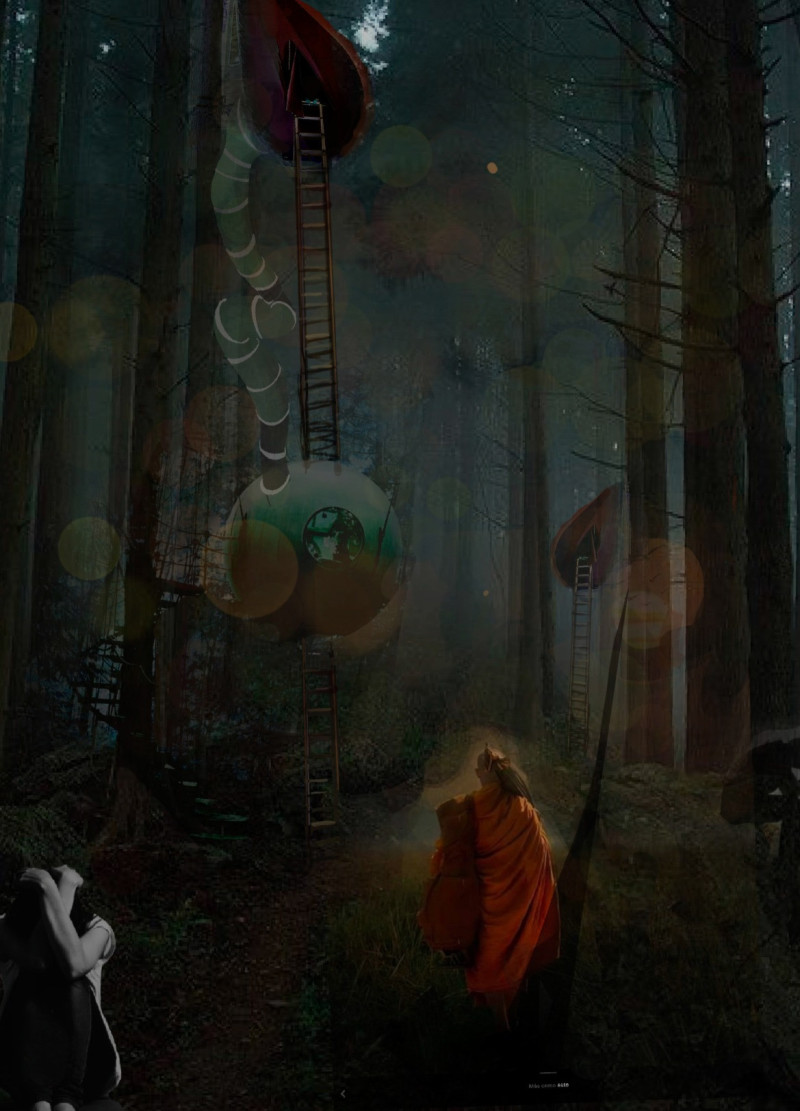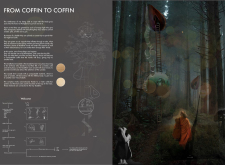5 key facts about this project
The setting of Aokighara Forest, known as the Suicide Forest, serves as a backdrop for an installation that deals with deep issues of mortality and rebirth. The design aims to create a space for individual reflection and support, where visitors can engage meaningfully with their inner struggles. Combining natural surroundings with thoughtful architecture, the project offers a unique environment for contemplation and connection.
Functionality and Experience
Upon arrival, visitors encounter representations of souls bathed in orange light, which symbolize compassion and warmth. Each person receives a backpack filled with items associated with suicide—pills, a knife, and a gun. This choice of items acknowledges the realities that many face and creates an opportunity for personal introspection.
Spatial Arrangement
Visitors ascend to treetops via a ladder, which signals a movement from the everyday world to a more serene experience. At the top, individuals spend their last night in an inflatable air capsule. Here, they are enveloped in the harmonic chants of Buddhist monks, intended to resonate within their minds and encourage a reconsideration of their circumstances.
Sustainability and Materials
Sustainability is an essential aspect of the design. The installation operates independently, utilizing water collection systems and solar panels placed on the tree canopies. Local wood is used for the Buddhist room, adding a natural warmth to the setting. The tents are made from compostable materials, promoting a cycle of life. If a visitor chooses to end their life, these tents will decompose and nourish the earth, allowing new trees to emerge and reinforcing the theme of regeneration.
Design Nuances
Every element of the installation is carefully designed to enhance the user experience. The arrangement offers a balance of solitude and contemplation, encouraging a deep engagement with personal feelings. Natural light filters through the trees, creating a calming atmosphere that supports reflection. Ultimately, the space serves as a poignant narrative about life and death, while also emphasizing the possibility of renewal through nature.



















































